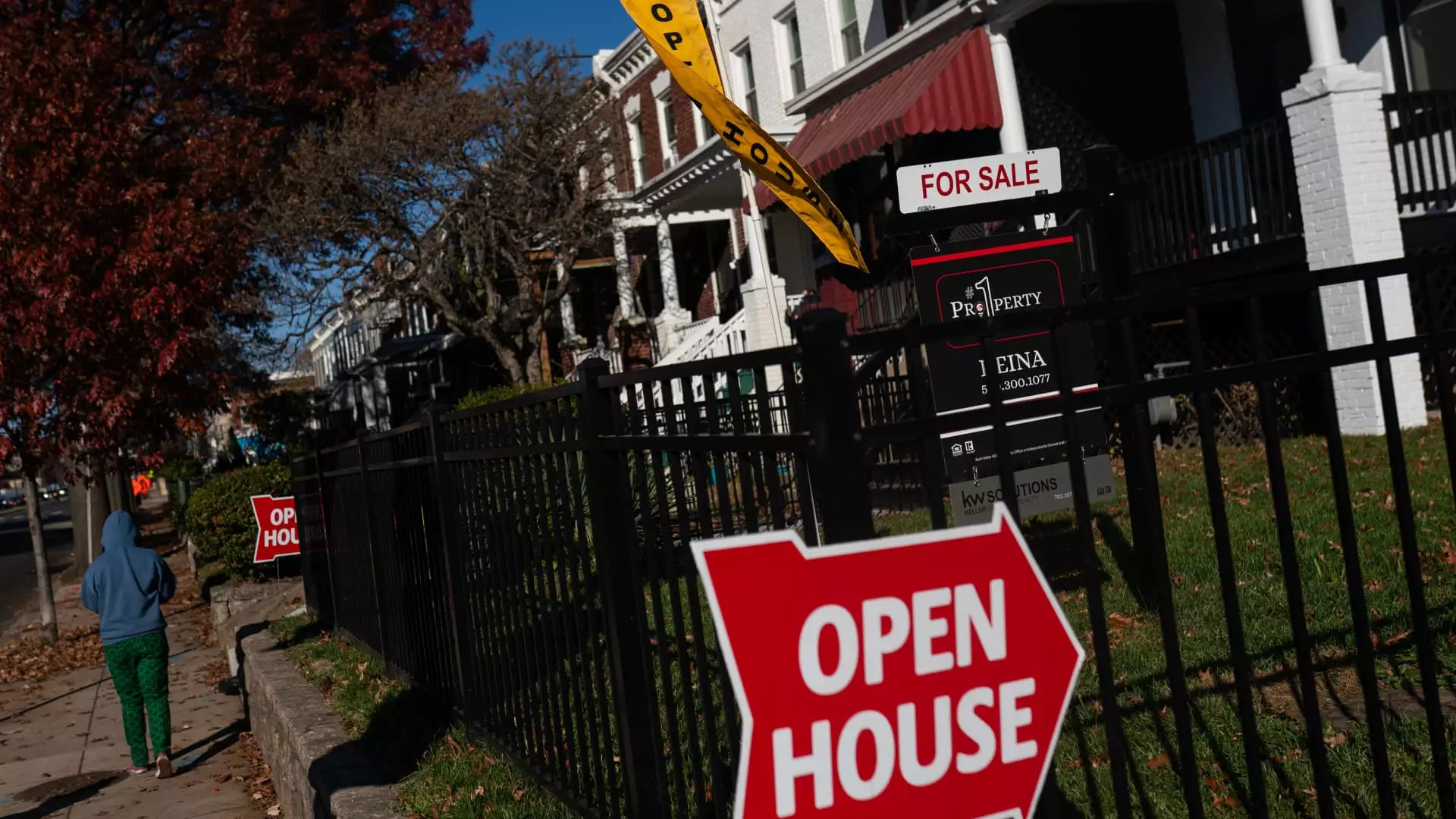The narrative of young individuals striving for homeownership has become increasingly fraught with difficulties and challenges. Maryland Governor Wes Moore’s personal story serves as a poignant lens through which we can examine a rapidly disappearing American dream. Despite his eventual success, Governor Moore’s turbulent experiences at military school, funded through the sacrifices of his immigrant grandparents, reveal the stark realities faced by many aspiring homeowners today. The barriers to achieving homeownership extend far beyond personal anecdotes; they intertwine with systemic issues that perpetuate inequality across generations. Consequently, it is crucial to scrutinize these trends, as they may well foretell a grim future for the younger generation.
The Financial Barriers to Homeownership
High housing costs have almost become a defining characteristic of urban environments, rendering the dream of homeownership elusive for millions. Just a few decades ago, median home prices generally aligned closely with median household incomes, creating a more accessible pathway towards homeownership. However, recent statistics tell a distressing story. According to the Urban Institute, the acceleration in home prices has far outstripped wage growth since 1980, creating a bitter reality for prospective homebuyers who are often forced to abandon their dreams altogether. Governor Moore highlights heart-wrenching statistics that suggest around 30% of young Marylanders are contemplating relocation due to these unbearable housing costs—a trend mirrored across the nation that reflects a disconnection between salaries and the affordability of homes.
The Decrease in Homeownership Rates
The decline in homeownership among the 35 to 44-year-old demographic starkly exemplifies this worrying trend. The Urban Institute’s research indicates that in comparison to 1980, homeownership has decreased by over 10% in this age group. Young families, once the backbone of the housing market, are now feeling the strain of economic pressures which have also been exacerbated by a reduction in household formation rates. As these individuals struggle to contend with rising costs, they find themselves stuck in a cycle of renting with seemingly no end in sight. The irony here is pointed; at a time when wealth generation through home equity is critically important, many in this age bracket are effectively locked out of real estate investment and long-term stability.
The Socioeconomic Divide
Perhaps most alarming is how deeply intertwined the barriers to homeownership are with socioeconomic status and educational attainment. The data indicates that those from lower-income quartiles exhibit the steepest declines in homeownership. Not only does this demographic face financial strain, but their likelihood of marriage—a factor surprisingly correlated with property ownership—becomes a further hurdle. The systemic issues don’t stop there; education remains a formidable barrier that affects the ability to secure financial stability. The correlation between educational achievement and homeownership is clear, and as fewer individuals from lower-income brackets graduate with degrees, the gulf between wealth and poverty widens.
The Racial Disparities in Homeownership
Race also plays an undeniable role in the dynamics of housing affordability and homeownership. Despite some progress, such as a modest increase in Black homeownership rates in 2023, the figures still reveal a painful reality: a persistent divide where Black homeownership stands at 44.7%, significantly behind the white rate of 72.4%. Such disparities cannot be divorced from historical injustices and discriminatory practices, which continue to impact the wealth accumulation of various racial groups today. As long as these barriers exist, a fair and equitable society will remain an unfulfilled promise, and countless families will continue to face an uphill battle toward homeownership.
Advocating for Policy Change
To address these multilayered challenges, actionable policy reform is paramount. Educational initiatives aimed at low-income households, coupled with down payment assistance programs, can be vital tools in empowering individuals to achieve homeownership. Additionally, reducing zoning restrictions and regulatory barriers can help spur housing production to meet the burgeoning demand. The resolve for reform must come from both the grassroots level and through legislative action. By working together to dismantle the systemic inhibitors to homeownership, we could pave the way for future generations to reclaim the American dream that offers not only shelter but security, stability, and the chance for wealth accumulation.
In an era marked by escalating housing costs and socioeconomic disparities, forging a path towards achievable homeownership is not merely a matter of personal success—it’s an essential collective responsibility we must all share.

